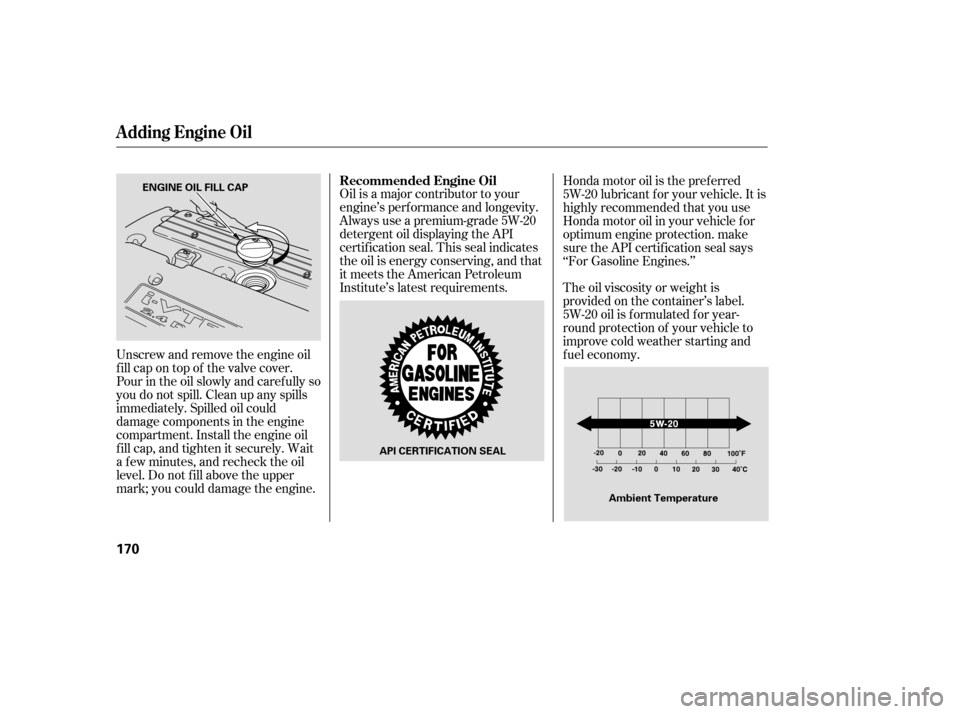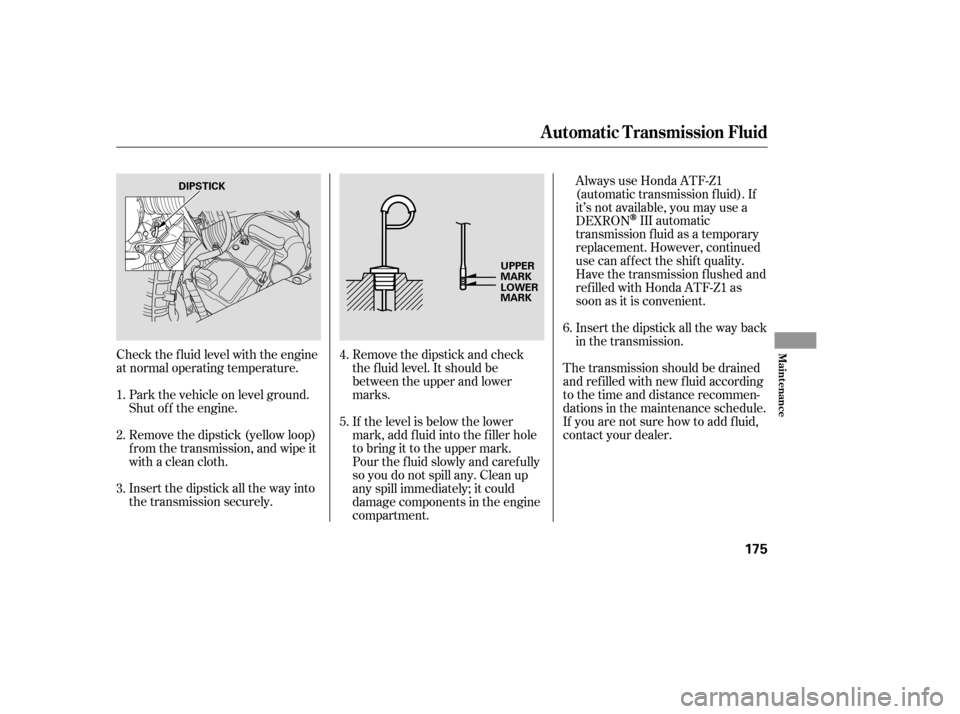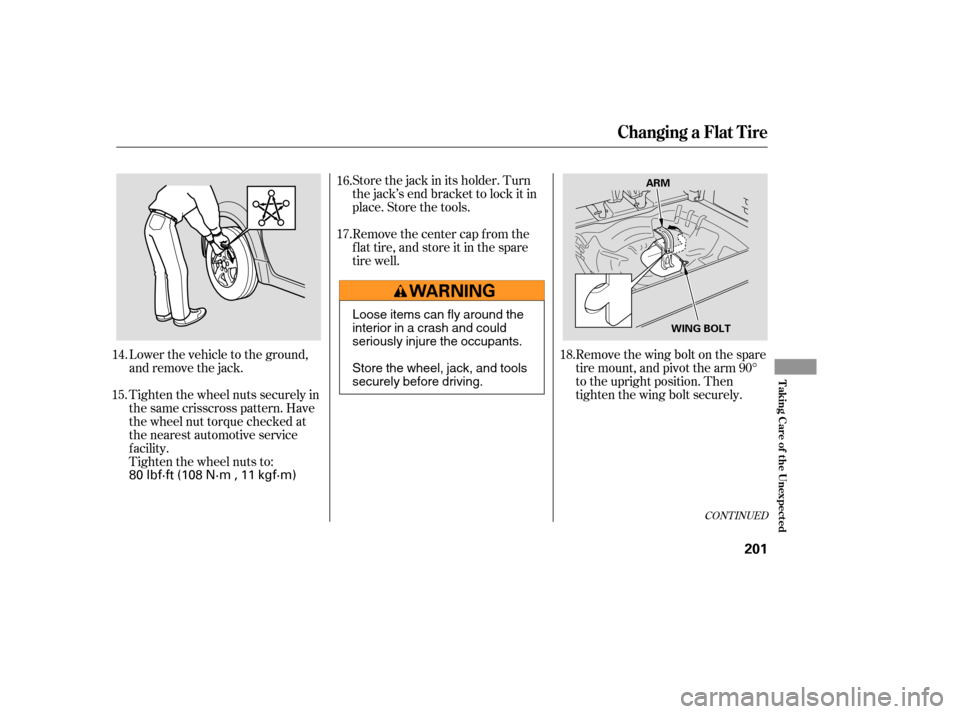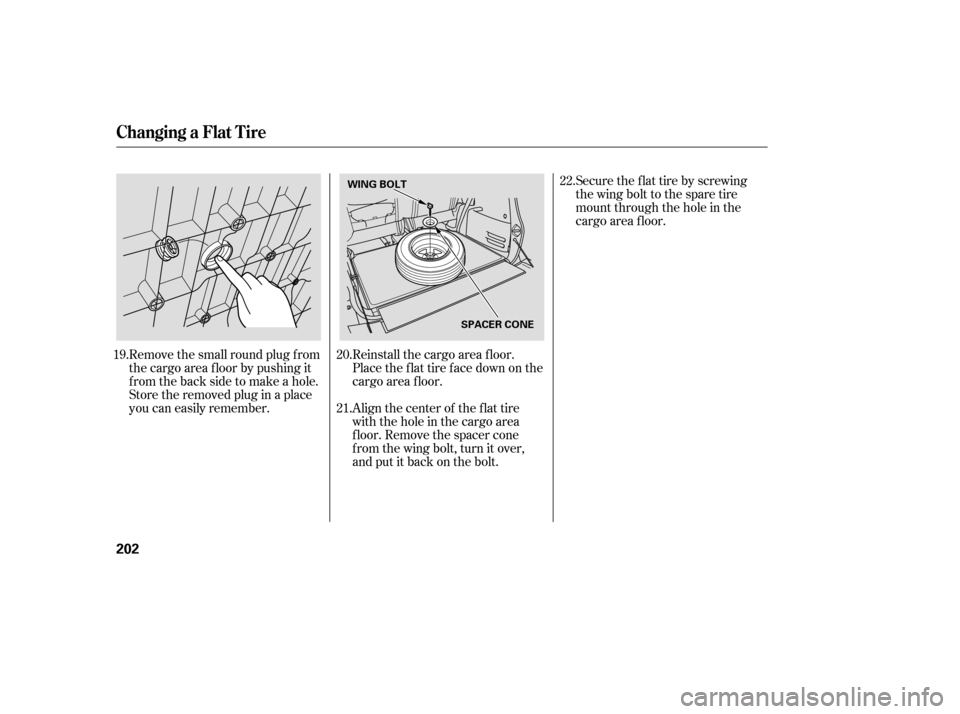ECU HONDA ELEMENT 2006 1.G Owner's Manual
[x] Cancel search | Manufacturer: HONDA, Model Year: 2006, Model line: ELEMENT, Model: HONDA ELEMENT 2006 1.GPages: 249, PDF Size: 3.19 MB
Page 155 of 249

Honda recommends that any trailer
having a total weight of 1,000 lbs
(450 kg) or more be equipped with
its own electric or surge-type brakes.
If you choose electric brakes, be
sure they are electrically actuated.
Do not attempt to tap into your
vehicle’s hydraulic system. No
matter how successf ul it may seem,
any attempt to attach trailer brakes
to your vehicle’s hydraulic system
will lower braking ef f ectiveness and
create a potential hazard.
Seeyourtrailerdealerformore
inf ormation on installing electric
brakes.
Any hitch used on your vehicle must
be properly bolted to the underbody.
Always use saf ety chains when you
tow a trailer. Make sure the chains
are secured to the trailer and hitch,
and that they cross under the tongue
and can catch the trailer if it
becomes unhitched. Leave enough
slack to allow the trailer to turn
corners easily, but do not let the
chains drag on the ground.
Towing can require a variety of
equipment, depending on the size of
your trailer, how it will be used, how
much load you are towing, and
where you tow. To ensure the
highest quality equipment, purchase
Honda equipment whenever possible.
Discuss your needs with your trailer
sales or rental agency, and f ollow the
guidelines in the rest of this section.
Also make sure that all equipment is
properly installed and that it meets
f ederal, state, province, and local
regulations.
CONT INUED
T owing Equipment and
A ccessoriesTrailer Brakes
Hitches
Saf et y Chains
Towing a Trailer
Driving
153
Page 157 of 249

When preparing to tow, and bef ore
driving away, be sure to check the
f ollowing:The vehicle has been properly
serviced, and the tires, brakes,
suspension, cooling system, and
lights are in good operating
condition. Your vehicle tires and spare are
properly inf lated (see page ),
and the trailer tires and spare are
inflated as recommended by the
trailer maker.
The added weight, length, and
height of a trailer will af f ect your
vehicle’s handling and perf ormance,
so driving with a trailer requires
some special driving skills and
techniques.
Foryoursafetyandthesafetyof
others,taketimetopracticedriving
maneuvers bef ore heading f or the
open road, and f ollow the guidelines
below.
All weights and loads are within
limits (see pages and ). The trailer has been properly
serviced and is in good condition. Drive slower than normal in all
driving situations, and obey posted
speed limits f or vehicles with trailers.
If you have an automatic
transmission, use overdrive (O/D)
when towing a trailer on level roads.
Turn of f the overdrive (O/D) when
towing a trailer in hilly terrain.
Thehitch,safetychains,andany
other attachments are secure.
All items in or on the trailer are
properly secured and cannot shif t
while you drive. 187
152
151
CONT INUED
Pre-T ow Checklist Driving Saf ely With a T railer
Towing a Trailer
T owing Speeds and Gears
Driving
155
Page 172 of 249

Oil is a major contributor to your
engine’s perf ormance and longevity.
Always use a premium-grade 5W-20
detergent oil displaying the API
certif ication seal. This seal indicates
the oil is energy conserving, and that
it meets the American Petroleum
Institute’s latest requirements.Honda motor oil is the pref erred
5W-20 lubricant f or your vehicle. It is
highly recommended that you use
Honda motor oil in your vehicle f or
optimum engine protection. make
sure the API certif ication seal says
‘‘For Gasoline Engines.’’
The oil viscosity or weight is
provided on the container’s label.
5W-20 oil is f ormulated f or year-
round protection of your vehicle to
improve cold weather starting and
f uel economy.
Unscrew and remove the engine oil
fill cap on top of the valve cover.
Pour in the oil slowly and caref ully so
you do not spill. Clean up any spills
immediately. Spilled oil could
damage components in the engine
compartment. Install the engine oil
f ill cap, and tighten it securely. Wait
a f ew minutes, and recheck the oil
level. Do not f ill above the upper
mark; you could damage the engine. Recommended Engine Oil
A dding Engine Oil
170
ENGINE OIL FILL CAP
API CERTIFICATION SEALAmbient Temperature
Page 177 of 249

Check the f luid level with the engine
at normal operating temperature.Park the vehicle on level ground.
Shut of f the engine.
Remove the dipstick (yellow loop)
f rom the transmission, and wipe it
with a clean cloth.
Insert the dipstick all the way into
the transmission securely. Remove the dipstick and check
the f luid level. It should be
between the upper and lower
marks.
If the level is below the lower
mark, add f luid into the f iller hole
to bring it to the upper mark.
Pour the f luid slowly and caref ully
so you do not spill any. Clean up
any spill immediately; it could
damage components in the engine
compartment.Always use Honda ATF-Z1
(automatic transmission f luid). If
it’s not available, you may use a
DEXRON
III automatic
transmission f luid as a temporary
replacement. However, continued
use can af f ect the shif t quality.
Have the transmission f lushed and
ref illed with Honda ATF-Z1 as
soon as it is convenient.
Insert the dipstick all the way back
in the transmission.
The transmission should be drained
and ref illed with new f luid according
to the time and distance recommen-
dations in the maintenance schedule.
If you are not sure how to add f luid,
contact your dealer.
3. 4.
5.
1.
2. 6.
Automatic Transmission Fluid
Maint enance
175
DIPSTICK
UPPER
MARK
LOWER
MARK
Page 178 of 249

If Honda MTF is not available, you
may use an SAE 10W-30 or 10W-40
viscosity motor oil with the API
Certif ication seal that says ‘‘FOR
GASOLINE ENGINES’’ as a
temporary replacement. However,
motor oil does not contain the proper
additives, and continued use can
cause stiffer shifting. Replace as
soon as it is convenient.
The transmission should be drained
and ref illed with new f luid according
to the time and distance recommen-
dations in the maintenance schedule.
Check the f luid level with the
transmission at normal operating
temperature and the vehicle sitting
on level ground. Remove the
transmission f iller bolt, and caref ully
f eel inside the bolt hole with your
f inger. The f luid level should be up
to the edge of the bolt hole. If it is
not, add Honda manual transmission
f luid (MTF) until it starts to run out
of the hole. Reinstall the f iller bolt,
and tighten it securely.
Manual T ransmission Fluid
176
FILLER BOLT
Correct Level
WASHER
Page 203 of 249

Store the jack in its holder. Turn
the jack’s end bracket to lock it in
place. Store the tools.
Remove the center cap from the
f lat tire, and store it in the spare
tire well.Removethewingboltonthespare
tire mount, and pivot the arm 90°
to the upright position. Then
tighten the wing bolt securely.
Tighten the wheel nuts securely in
the same crisscross pattern. Have
the wheel nut torque checked at
the nearest automotive service
f acility.
Tighten the wheel nuts to: Lower the vehicle to the ground,
and remove the jack. 18.
16.
17.
14.
15.
CONT INUED
Changing a Flat Tire
T aking Care of t he Unexpect ed
201
WING BOLT
ARM
80 lbf·ft (108 N·m , 11 kgf·m)
Loose items can fly around the
interiorinacrashandcould
seriously injure the occupants.
Store the wheel, jack, and tools
securely before driving.
Page 204 of 249

Remove the small round plug f rom
the cargo area f loor by pushing it
fromthebacksidetomakeahole.
Storetheremovedpluginaplace
you can easily remember.Reinstall the cargo area f loor.
Place the flat tire face down on the
cargo area f loor.
Align the center of the f lat tire
with the hole in the cargo area
f loor. Remove the spacer cone
from the wing bolt, turn it over,
and put it back on the bolt.Secure the f lat tire by screwing
thewingbolttothesparetire
mount through the hole in the
cargo area f loor.
19. 20.
21.22.
Changing a Flat Tire
202
WING BOLT
SPACER CONE